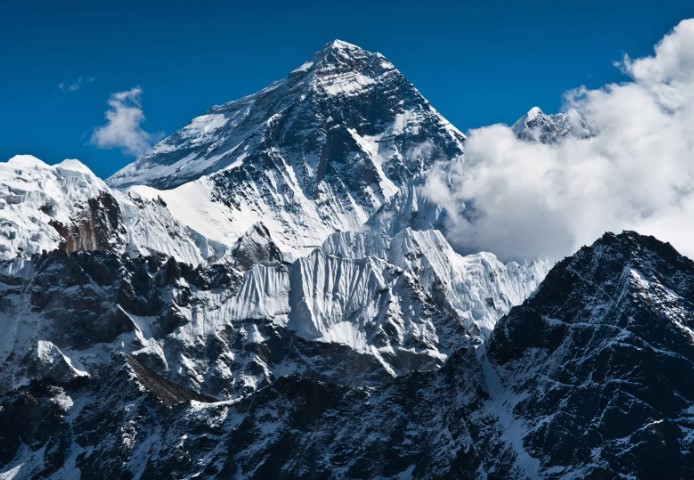Millions of years of geological history can be seen in the bands of red rock that make up the Grand Canyon. In addition to offering a peek into Earth’s long history, the Grand Canyon is an impressive sight — it is around a mile deep and an average of 10 miles wide, and it stretches almost 300 miles. It is the only U.S. site included in the Seven Natural Wonders list and is revered alongside marvels like Mount Everest, the Great Barrier Reef, and the aurora borealis.
In addition to being physically impressive, the Grand Canyon is particularly photogenic — especially when the rising or setting sun seems to set the layered red rock on fire. Those looking to avoid the crowds can journey to the quieter North Rim of the Grand Canyon or visit the South Rim during the winter when a stark-white layer of snow makes the red rock of the canyon pop.
To experience the wonder of the Grand Canyon you need only to find a viewpoint, sit down, and take a moment to enjoy what’s laid out in front of you. Below are a few of our favorite spots to enjoy the view — including Grand Canyon viewpoints on the North Rim and South Rim, as well as a few hard-to-access spots where you can avoid the crowds.
Related: The 25 Best National Parks in the U.S.
Mather Point, South Rim
jose1983/Getty Images
Mather Point is one of the park’s most popular viewpoints, and for good reason. It is located a short walk from the South Rim visitor center, and on a clear day, you can see over 30 miles to the east and over 60 miles to the west.
Yavapai Point, South Rim
Christophe Lehenaff/Getty Images
The best thing about Yavapai Point is that if the weather isn’t cooperating, you can enjoy the views from inside the Yavapai Geology Museum, which sits right on the edge of the canyon and has panoramic windows and plenty of geological information.
Bright Angel Point, North Rim
folgt/Getty Images
Bright Angel Point is the most popular viewpoint on the North Rim. To get there, you’ll need to walk a quarter mile on a paved trail (which is fairly steep). The reward is an excellent view of Bright Angel and Transept Canyons, plus the advantage of being over 1,000 feet higher than the South Rim.
Redwall Bridge, North Rim
Whit Richardson/Getty Images
The Redwall Bridge viewpoint is one of those lesser-visited sites where it’s easy to avoid the crowds and enjoy some solitude. The bridge, which is reached from the North Kaibab Trail (the least visited of the major inner-canyon trails), requires a 5.2-mile, round-trip hike with 2,200 feet of vertical gain. It’s a trek, but the still, quiet views are well worth it.
Hopi Point, South Rim
tupungato/Getty Images
There are three ways to get to Hopi Point, which the national park website claims is “an ideal location for sunrise or sunset.” In the summer, you can hop on the park’s free shuttle bus service or hike along the Rim Trail (2.5 miles), and in the winter, you can drive your car down Hermit Road to get there. No matter how you get there, take the park’s advice and arrive early or stay until sundown so you can enjoy watching the sun kiss the canyon walls.
Plateau Point, South Rim
John Elk/Getty Images
If you’re up for the challenge of getting to Plateau Point, which is located six miles down Bright Angel Trail, you’ll get the chance to enjoy vistas that most people will never see. Just make sure to budget time to make the six-mile return journey — which is uphill.
Point Imperial, North Rim
Leamus/Getty Images
Point Imperial is the highest point on the canyon rim and the most northern boundary of the park. These two things make the views from Point Imperial particularly spectacular. You’ll get to see the eastern end of the Grand Canyon along with views of the Painted Desert.
Shoshone Point, South Rim
kellyvandellen/Getty Images
Considering its location on the busier South Rim of the Grand Canyon, Shoshone Point is surprisingly quiet. To get there, you need only walk an easy mile along a dirt road before the canyon opens up before you. From the edge, you can get a sense of the sheer magnitude of the canyon — which drops at your feet.
Desert View, South Rim
lucky-photographer/Getty Images
Desert View is set near the eastern edge of the Grand Canyon along Desert View Drive — a scenic road that you can take from Grand Canyon Village. From the small settlement of Desert View, travelers can look out over the layered rock canyon walls or peer up at Escalante and Cardenas Buttes, two standout peaks.
Angel’s Window, North Rim
JeffGoulden/Getty Images
Those focused on simply looking out over the canyon and sticking to well-worn routes might miss Angel’s Window, which is one of the park’s most unique sites. To reach the natural arch, which has an upside-down triangle window in the middle of it, take the path off the Cape Royal Trail and make your way to the top of the arch.
Ooh Ah Point, South Rim
Michael King/Getty Images
With a name like Ooh Ah Point, expectations are always sky-high, yet the viewpoint continues to deliver a famously wide and open view over the canyon that is nothing short of spectacular. To reach the point, hop on the South Kaibab Trail and follow the path for just under a mile. From there you can either continue on or make the trek back to the trailhead.
Toroweap Overlook, North Rim
Mark Newman/Getty Images
Toroweap Overlook is located in Tuweep, the ancestral home of the Southern Paiute people. To drive into the valley, you’ll need a backcountry permit in addition to your day or site pass, but the extra effort is worth the experience of driving into the broad valley and enjoying a bird’s-eye view of the Colorado River.
Powell Point, South Rim
Craig Zerbe/Getty Images
The best time to make your way to Powell Point is at sunrise or sunset when the broad expanse comes alive with color as the sun hits the rock. The point, which is on the South Rim of the canyon, is easy to access thanks to a two-way shuttle.
The Abyss, South Rim
Tuan Tran/Getty Images
Part of what makes The Abyss so spectacular — and the reason for its name — is that it features the longest vertical drop on the South Rim at over 3,000 feet. The site’s drop-off has to be seen to be completely understood and is a wonderful example of how gravity plays a role in the shape of the canyon walls.

:max_bytes(150000):strip_icc()/TAL-Ooh-Ahh-Point-GRANDCANYONVIEWS0323-cdb352b396814209968bdc1c962fea87.jpg)




More Stories
This Phone Crossbody Is Perfect for Travel
Complete Guide To Croatia’s Medieval Seaside City
Universally Flattering Swimsuits I Always Pack